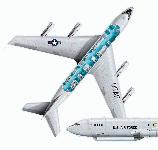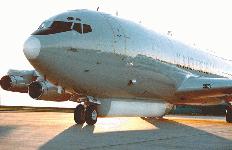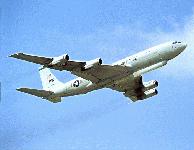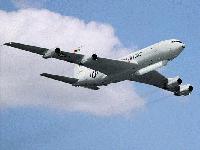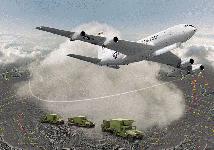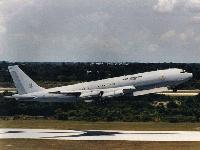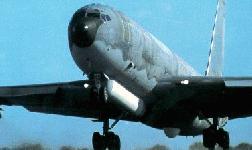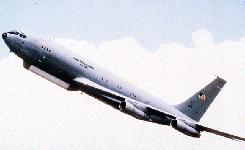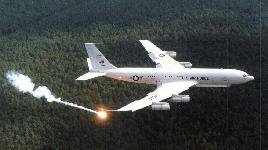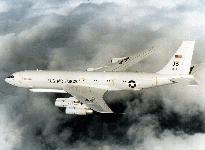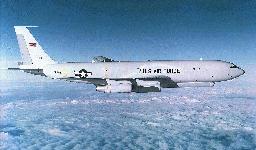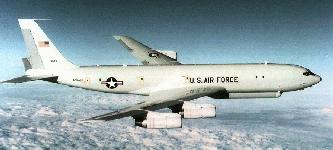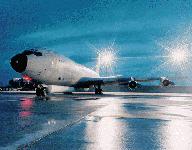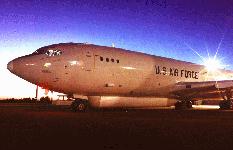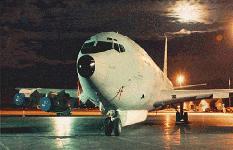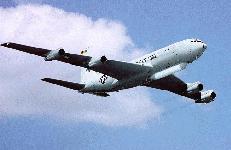




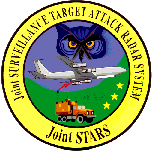 The Joint Surveillance Target Attack Radar System (Joint STARS) is a long-range, air-to-ground surveillance system designed to locate, classify and track ground targets in all weather conditions.
While flying in friendly airspace, the joint Army-Air Force program
can look deep behind hostile borders to detect and track ground
movements in both forward and rear areas. It has a range of more
than 150 miles (250 km). These capabilities make Joint STARS effective
for dealing with any contingency, whether actual or impending
military aggression, international treaty verification, or border
violation.
The Joint Surveillance Target Attack Radar System (Joint STARS) is a long-range, air-to-ground surveillance system designed to locate, classify and track ground targets in all weather conditions.
While flying in friendly airspace, the joint Army-Air Force program
can look deep behind hostile borders to detect and track ground
movements in both forward and rear areas. It has a range of more
than 150 miles (250 km). These capabilities make Joint STARS effective
for dealing with any contingency, whether actual or impending
military aggression, international treaty verification, or border
violation.
Specifications | |
| Aircraft | Boeing 707-300 series aircraft, modified by Northrop Grumman |
| Designation E-8A for two prototype aircraft | |
| Designation E-8C for one test aircraft and all production aircraft | |
| Primary Function: | Ground Surveillance
|
| Contractor: | Northrop Grumman Corp. |
| Power Plant: | Four JT3D engines |
| Length: | 152'11" (46.6 m); |
| Height: | 42'6" (12.9 m); |
| Weight: |
171,000 pounds (77,565 Kg)-- Empty 155,000 pounds (70,307 Kg)-- Max Fuel 336,000 pounds (152,408 Kg)-- Max Gross |
| Wingspan: | 145'9" (44.4 m); |
| Speed: | .84 Mach |
| Date Deployed: | 1996 |
| Inventory: | 17 production aircraft |
| Service ceiling | 42,000 feet |
| Range: | 11 hours -- 20 hours with air refueling |
| Unit Cost: | $225 million |
| Crew | |
| Standard mission | crew of 21 comprising 18 operators and 3 flight crew |
| Long endurance | crew of 34 comprising 28 operators and 6 flight crew |
| Radar | 24 feet length antenna, side looking, phased array. Housed in canoe shaped radome under forward fuselage aft of the nose landing gear, Scanned electronically in azimuth, Scanned mechanically in elevation from either side of the aircraft. |
| Radar operating modes | Wide area surveillance |
| Fixed target indication | |
| Synthetic aperture radar | |
| Moving target indicator | |
| Target classification | |
| Radar processors | Three load sharing programmable processors each processor containing five high speed, fixed point distributed processors |
| Radar operation and control system | One navigation and self defense workstation |
| Seventeen identical operator workstations | |
| Functions of operator workstations: flight path planning and monitoring generation and display of cartographic and hypsographic map data. | |
| Radar management, surveillance and threat analysis, radar data review, time of arrival calculation, jammer location, distance and azimuth calculation, pairing of weapons and targets, and other functions | |
| Communications digital data links | Surveillance and control data link (SCDL) for transmission to mobile ground stations |
| Joint Tactical Information Distribution System (JTIDS) for tactical air navigation (TACAN) operation and Tactical Data Information Link-J (TADIL-J) generation and processing | |
| Satellite communications link (SATCOM) | |
| Voice Communications | Twelve encrypted UHF radios |
| Two encrypted HF radios | |
| Three VHF encrypted radios with provision for Single Channel Ground and Airborne Radio System (SINCGARS) | |
| Multiple intercom nets | |
